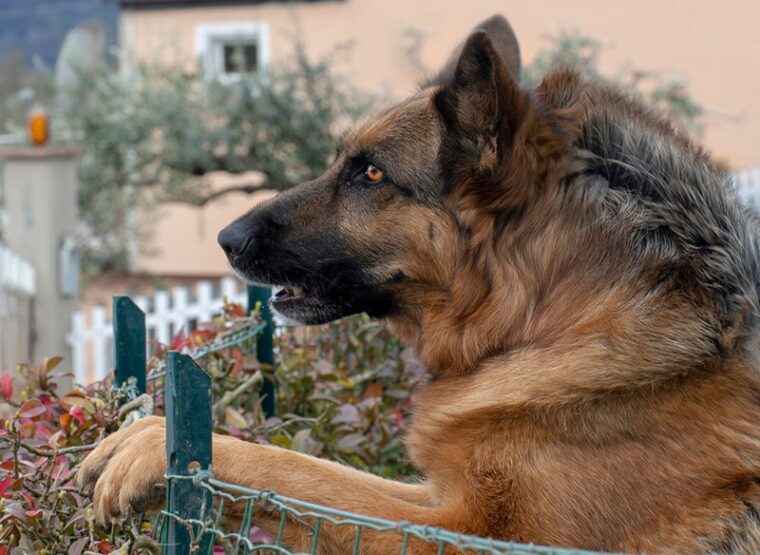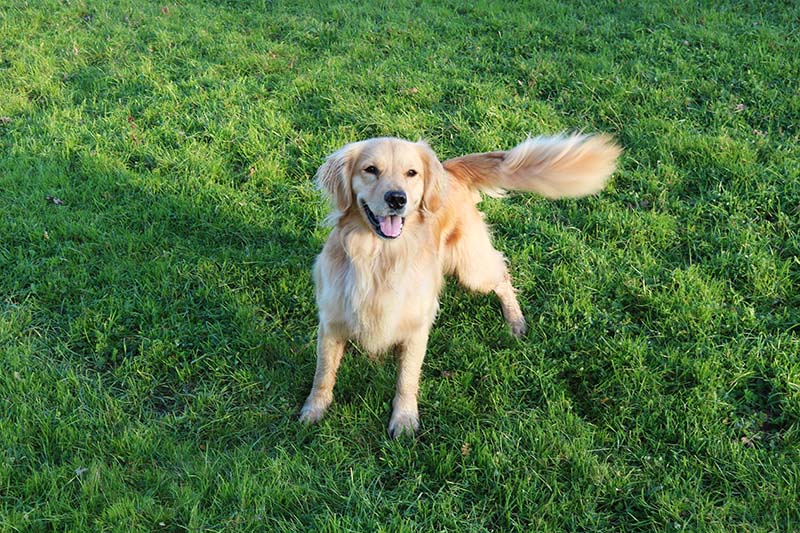[ad_1]

Dogs don’t rely only on a wagging tail or loud bark to let us know how they’re feeling. Just as hairs can stand on the back of our necks when fright sets in, dogs have hackles that can raise and lower according to their mental state. Hackles are the hairs along the dog’s back that stand up when they’re feeling strong emotions, such as fear or anger.
A dog’s hackles are a unique trait that can take on various meanings depending on the context. To help you better understand your dog and the cues they provide, let’s explore what dog hackles are and what they signify.
What Are Dog Hackles?
Dog hackles are hairs on a dog’s back, running from the neck between the shoulders along the spine to the base of the tail. They occasionally rise due to piloerection, a sympathetic nervous system response similar to that which causes human goosebumps. Raised hackles are involuntary and typically indicate some kind of stress.

Why Do Dogs Raise Their Hackles?
A dog raises its hackles primarily when it feels fear or aggression, a “fight or flight” response to a threat. In some instances, they can take on a practical function by making the dog look looming and more menacing. In a more general sense, hackles appear from arousal. While they could arise from fear or anger, they may also stand up when the dog feels curious, anxious, surprised, or excited.
A female dog in heat can cause a male’s hair to stand. A loud, honking horn or sudden bang could also make a dog’s hackles bolt upright. With many types of arousal potentially raising a dog’s hackles, owners must look at a broader collection of cues to understand their dog’s emotional state.
Interpreting a Dog’s Hackles
The dog’s eyes, ears, posture, and tail position can elucidate the meaning of the raised hackles. Is the tail high and the body stiff, indicating aggression? Is their body lowered and their mouth snarling, or are they wagging their tail and acting playful? Monitoring all the signs will inform you as to whether your dog is nervous and needs comfort or if they are aroused to the point of aggression and need to go to a separate room.

Theories on the Meaning of Dog Hackles
We don’t understand everything surrounding why dogs raise their hackles, but theories abound about what they mean. Some argue that we can interpret hackles alone to understand a dog’s emotions. It all depends on the location of the raised hairs. The following are some of the supposed meanings behind different raised hackle patterns:
There isn’t enough evidence to support these assumptions to make them practical identifiers when your dog’s hackles stand up. Rather than concentrate on where your dog is raising its hackles, look at all the signals in the eyes, ears, mouth, tail, posture, and vocalizations to understand their emotional state.
Do All Dogs Have Hackles?
All dogs have a muscle-contracting reaction that raises their hackles. But certain breeds will have coat types that make them more apparent than others. Long, shaggy double coats can make hackles challenging to notice, as do the curly coats of Poodles and Doodles. Depending on the coat type, the erect hairs may be more apparent in particular areas along the neck and back.

What Do You Do About Raised Hackles?
Understanding the entirety of your dog’s body language will give you the best chance of responding appropriately to raised hackles. You may see hackles rise during playtime as your dog gets excited, which shouldn’t be cause for concern. If you notice them alongside signs of hostility around strangers and pets, you must separate your dog before anything happens.
Consistent training, socialization, and exposure to new situations early in life can help limit the fear and anxiety that inspires raised dog hackles. By becoming comfortable around varying stimuli, your dog will make better decisions, suffer less confusion, and display more confidence around unfamiliar people and places.
Final Thoughts
Dog hackles are one of the many mechanisms our four-legged friends use to communicate with us and other animals. They can’t control it, as it only occurs from an emotional stimulus. As a result, you should take note of your dog’s behavior and other signs whenever you see the raised back hair.
If you’re uncertain what your dog’s raised hackles mean, give your dog attention and redirect their focus to help them forget the cause of the stress. Always stay alert when you notice raised hackles. Develop an understanding of why your dog responds this way and how it works alongside their other reactions to help you avoid any unfortunate and potentially dangerous situations.
Featured Image Credit: Sarah2, Shutterstock


